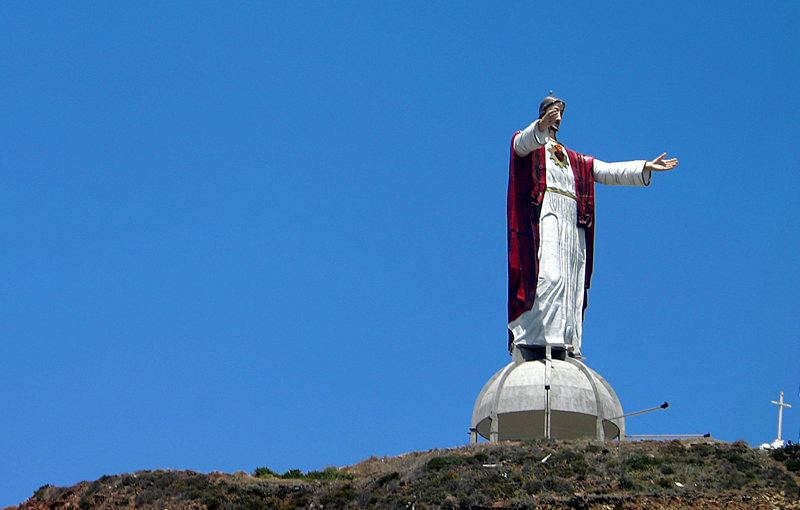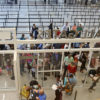Citing violent crimes on American citizens — including homicide, kidnapping, carjacking, and robbery — as a result of the activities of criminal organizations, the Department of State of the United States issued this official warning alerting to the risk of traveling to certain parts of Mexico…
New Travel Warning to Mexico Issued: Should You Avoid Going There?
…but does that mean that you should not travel there?
Before attempting to answer that question, here is an excerpt from the official warning:
“Gun battles between rival criminal organizations or with Mexican authorities have taken place on streets and in public places during broad daylight. The Mexican government dedicates substantial resources to protect visitors to major tourist destinations and has engaged in an extensive effort to counter criminal organizations that engage in narcotics trafficking and other unlawful activities throughout Mexico. There is no evidence that criminal organizations have targeted U.S. citizens based on their nationality. Resort areas and tourist destinations in Mexico generally do not see the level of drug-related violence and crime that are reported in the border region or in areas along major trafficking routes.”
Even more ominous sounding is this excerpt:
“U.S. citizens have been murdered in carjackings and highway robberies, most frequently at night and on isolated roads. Carjackers use a variety of techniques, including roadblocks, bumping/moving vehicles to force them to stop, and running vehicles off the road at high speeds. There are indications that criminals target newer and larger vehicles, but drivers of old sedans and buses coming from the United States are also targeted. U.S. government personnel are not permitted to drive from the U.S.-Mexico border to or from the interior parts of Mexico. U.S. government personnel are prohibited from intercity travel after dark in many areas of Mexico. U.S. citizens should use toll roads (cuotas) whenever possible. In remote areas, cell phone coverage is limited or non-existent.”
Several years ago, I traveled with approximately a dozen frequent travelers from El Paso across the border to Ciudad Juárez, which at that time earned the title of the most violent city in the world due to its high homicide rates. We had a nice lunch at a restaurant in town; and one of the frequent travelers who resided in El Paso was the de facto leader of the group and knew where to go. We eventually crossed over the border back into the United States without any incident or sense of being in danger — although the wait times to enter the United States were horrendously extensive.
Today, “Juárez is once again one of the most dangerous cities in the world,” according to this article written by Lorena Figueroa for the El Paso Times. “The Citizens Council for Public Security and Criminal Justice, a Mexican think tank, has ranked Juárez 37th out of the 50 most violent cities worldwide with a population of more than 300,000.”
I have been to Mexico multiple times — from Tijuana to Cancún — and although I witnessed a general quality of life which does not resemble that in the United States, I never felt unsafe or in danger.
That, of course, does not mean that the danger does not exist.
Although I have no desire to return to Mexico at this time, I would have no hesitation in returning to that country — despite the issuance of the official travel warning.
Summary
The aforementioned article written by Lorena Figueroa also notes that four cities in the United States “also made the list, including St. Louis, Mo., Baltimore, Md., New Orleans, La., and Detroit, Mich. They ranked 14, 26, 34 and 36, respectively.” Plenty of neighborhoods, cities and other locations in the United States exist where you can suddenly find yourself in danger — and they do not have to official be listed anywhere as dangerous.
I have also unknowingly traveled on what is considered one of the most dangerous roads in the world — and I emerged unscathed.
To borrow two of the three ways to avoid being the target of pickpockets, you should always remain aware and alert at all times while simultaneously avoiding being distracted; and be as inconspicuous as possible. Assimilate yourself amongst the local population and do not call attention to yourself with what you wear or how you act in order to lessen the possibility of nefarious individuals or groups targeting you and reduce your chances of being attacked or harmed.
No place is 100 percent safe — not even your own home — so to reiterate the summary which I originally wrote in this article pertaining to whether or not supposedly dangerous places are safe to visit, I am not advocating that you should drop a sedentary lifestyle to instantly become a thrill-seeker. What I am saying is that there really is nothing to fear — and that with risk comes excitement, adventure and intrigue. What those people who purposely inflict terror hope to do more than kill people — seemingly randomly — is to instill fear in people; and the reaction of chaos, confusion and fear is exactly what the perpetrators want — even if they are not responsible for the source of that fear. What those who break the law hope to do is steal things from you for their own personal gain — and those type of people exist almost everywhere.
While I would personally be hesitant about visiting a few certain countries — such as Syria, Somalia and Yemen as three examples — right now, the best advice I can impart to you is to take the proper precautions when you travel and remain alert and aware of your surroundings. Know that there are always risks involved — it is never a bad idea to check the destination of your choice here first before you travel if you are a citizen of the United Staes — and know that commercial air travel is still one of the safest methods of travel in the world…
…so sit back, relax and enjoy your travels — whether your destination is Mexico or wherever you may be headed next. May your travels be packed with plenty of excitement where you will experience reactions of envy every time you tell your travel stories to others — but may you travel safely in the process; and never be afraid to take flight.
A religious statue overlooks Mexican Federal Highway 1 between Tijuana and Puerto Nuevo. Photograph ©2006 by Brian Cohen.

